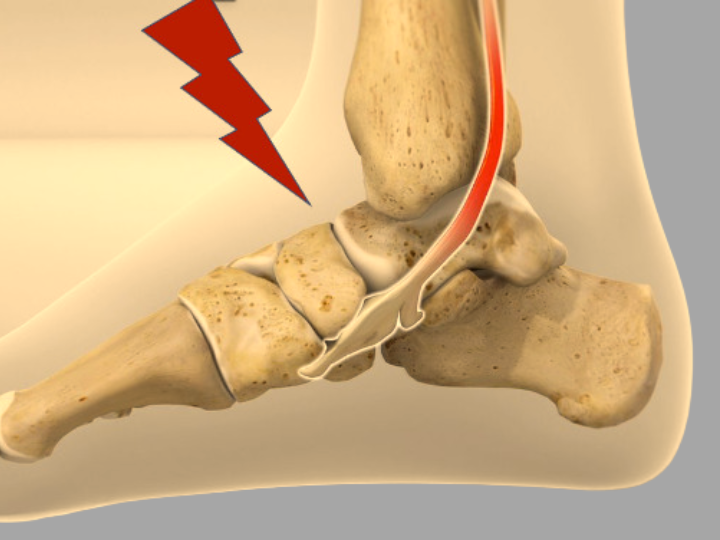A sprained ankle is an injury anyone can suffer from, whether it is a sportsman or an individual leading a normal life. It consists of the ligament structures supporting the ankle, which, upon stretching or tearing due to trauma, creates pain, swelling, and the inability to walk properly. Proper wrapping of the sprained ankle is a basic factor in stabilizing the joint, reducing swelling, and hastening the recovery process. The following guide will take you through the steps to wrap a sprained ankle effectively, with the view of having you or your loved one get back to normal activities as quickly as possible.
Ankle Sprains Explained
Before diving into the wrapping process, it is vital to know what an ankle sprain is. The classification for ankle sprains is usually categorized into three grades:
Grade 1, or Mild: The ligament is mildly stretched or microscopically torn with mild tenderness, swelling, and stiffness.
Grade 2, or Moderate: There is partial tearing of the ligament with moderate pain, swelling, and bruising. It is tough to walk.
Grade 3, or Severe: The ligament is entirely torn with severe pain, swelling, bruising, and instability. Unable to walk except with significant pain.
Understanding how severe the sprain has occurred can therefore provide a good insight into how to go about treating the injury, including the amount of tightness that may be necessary when wrapping the ankle.
Why It Is Important to Wrap a Sprained Ankle
Wrapping a sprained ankle offers several reasons, including the following :
Support and Stability: Wrapping provides support to the injured ligaments, preventing further injury while allowing the ankle to heal properly.
Compression: The wrap applies gentle pressure to the injured area, helping to reduce swelling and inflammation.
Protection: The wrapping protects the ankle from external blows that may further harm the injury.
Pain Relief: Proper wrapping of the ankle can relieve pain by limiting the movements of the joint.
Material Needed for Wrapping a Sprained Ankle
Before starting to wrap, gather the following material:
Elastic bandage: An elastic bandage of 2- to 4-inch width is appropriate for wrapping a sprained ankle. Adhesive tape: To keep the bandage in place.
Padding: Optional, but may be used for comfort.
Cold pack: To constrict swelling before wrapping.
An ankle brace or splint: For further support, especially for more severe sprains.
How to Wrap a Sprained Ankle: Step-by-Step Instructions
Prepare the Ankle:
- Before wrapping, make sure the ankle is clean and dry.
- Elevate the ankle above heart level to help decrease swelling.
- Apply a cold pack to the area for 15-20 minutes, then remove it before starting the wrap.
Position the Foot:
- Have the injured person sit or lie with the leg straight.
- The foot should be at a right angle to the leg and at a neutral position of the ankle.
Start the Wrap:
- The wrap around the elastic bandage starts around the ball of the foot just below the toes.
- Circle around the foot two to three times to hold the bandage in its place.
Wrap Around the Arch:
- Continue wrapping across the top of the foot, circling the arch.
- Overlapping each layer by about half the width of the bandage helps to make certain all areas are covered.
Wrapping the Ankle:
- After wrapping across the arch, circle the bandage behind the ankle and up across the top of the foot in a figure-eight configuration.
- Continue the figure-eight pattern across the foot and then around the ankle.
Cover the Ankle Joint:
- Continue circling the ankle joint, working your way up the leg a little until you feel you have fully wrapped the ankle.
- Pull the bandage snug so that it will not be too tight and cut off circulation.
Fasten the Bandage:
- When you are finished wrapping your ankle, secure the end of the bandage with adhesive tape.
- Check to see that your wrap is comfortable and that the circulation is not constricted.
You should be able to fit two fingers under the bandage without it feeling too tight
Check Circulation:
- After wrapping, check the toes for signs of poor circulation, such as paleness or bluish color
- If circulation is compromised, rewrap the ankle with less pressure
Apply an Ankle Brace or Splint (optional):
- For additional stability, you may want to apply an ankle brace or splint over the bandage, especially if you have a moderate to severe sprain
When to Seek Medical Attention
Wrapping a sprained ankle can be a very effective part of at-home treatment, however, sometimes it is necessary for medical attention to be given:
Severe Pain: If the pain is bad and does not get better after RICE, go see a doctor.
Inability to Bear Weight: A medical evaluation by a doctor is needed if one cannot walk or bear weight on the ankle.
Deformity: The casualty needs to seek immediate medical attention when the ankle appears misshapen, or there is a visible bone.
No Improvement: If after a few days of home treatment, there is no improvement. Consult a healthcare provider.
Tips for Effective Ankle Sprain Recovery
Use RICE Formula: Rest, Ice, Compression, and Elevation are the main ingredients during the initial management of the ankle sprain. Wrapping the ankle constitutes the compression phase of the treatment to reduce swelling.
Rest and Avoid Strain: Give the ankle some time to heal itself. Avoid activities that would stress the joint unnecessarily. If need be, use crutches to take the weight off the ankle.
Ice Regularly: Wrap an ice pack or even a bag of frozen peas around the sprained ankle for 15 to 20 minutes every two to three hours for the first two days to keep down swelling.
Ankle Elevation: Elevate the ankle above the level of your heart, unless otherwise indicated by your physician, to reduce swelling and promote healing.
Wear a Brace when Required: An ankle brace may be invaluable for added support during those periods of recovery when one is required to walk and move about.
Rehabilitate with Exercises: When some of the pain and swelling is down, gentle exercises can help restore strength and flexibility to the ankle. Always check with a healthcare provider or physical therapist before starting any exercise program.
Watch for Complications: Watch for signs of complications such as increased swelling, severe pain, or signs of infection, including redness, warmth, and pus. If these symptoms occur seek medical attention.
Frequently Asked Questions on How to Wrap a Sprained Ankle
1. For how long should I keep my ankle wrapped?
It is recommended to keep the ankle wrapped for the initial period of 48 to 72 hours following the injury since this helps in controlling swelling. You can re-wrap your ankle after this till it feels necessary, but most especially if you are mobile or putting weight on it.
2. Is it okay to sleep with my ankle wrapped?
It usually follows that a person is advised not to sleep with the wrap on to facilitate appropriate circulation. However, if one’s physician advises keeping it wrapped up, ensure the wrap is not too tight and circulations are checked frequently.
3. What do I do if the wrap seems too tight?
This would include removing the bandage and re-wrapping the ankle with less pressure if the wrap seems too tight or if there is any numbness, tingling, or discoloration of the toes. That is how you keep the blood flowing while still providing support.
4. How often should I re-wrap the ankle?
You must re-wrap your ankle at least once a day or whenever the bandage gets loose, dirty, or wet. Re-wrapping ensures the bandage remains snug and supportive.
5. Should I wrap my ankle in case of lingering pain?
Yes, you can wrap your ankle in case of pain because, in the absence of excessive pressure, management of pain can take place by the provision of stability to the joint with limited motion.
Conclusion: Master the Art of How to Wrap a Sprained Ankle
Wrapping a sprained ankle is a great skill that helps oneself or another recover fast from this common injury. Give either yourself or someone else the perfect beginnings of support and care by following these steps, which ensure the best manner of promoting healing. Remember that wrapping is one part of the treatment, but equally important is rest, icing, and elevation to minimize swelling in the ankle. Be less anxious about the severity of the sprain, or whether the symptoms worsen, and seek medical professional advice without any hassle. Most sprained ankles will heal well and allow you to get on your feet with appropriate care and back to your normal activities.





